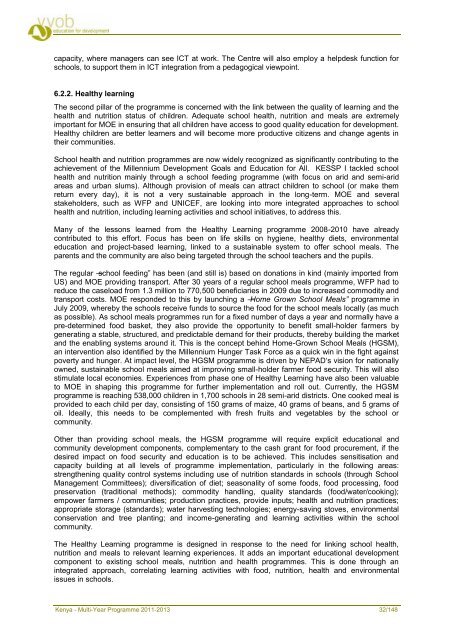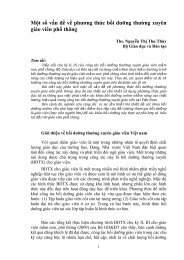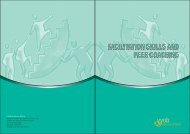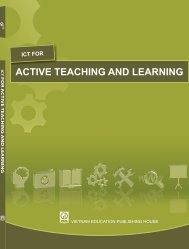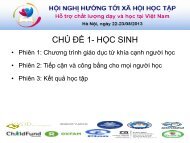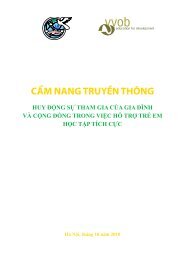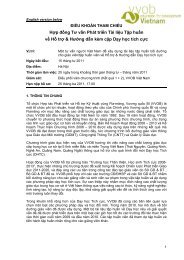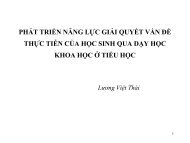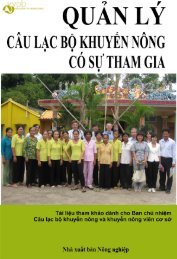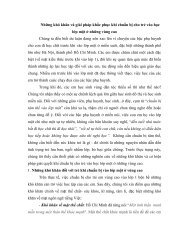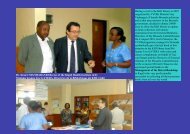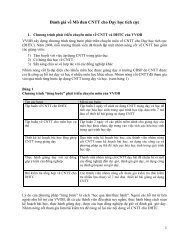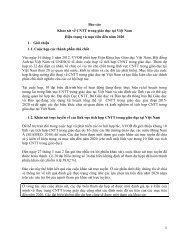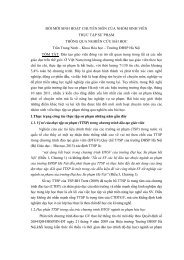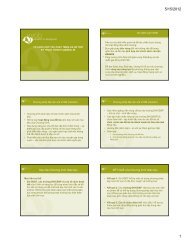Kenya Multi-Year Programme 2011-2013 - VVOB
Kenya Multi-Year Programme 2011-2013 - VVOB
Kenya Multi-Year Programme 2011-2013 - VVOB
- No tags were found...
You also want an ePaper? Increase the reach of your titles
YUMPU automatically turns print PDFs into web optimized ePapers that Google loves.
capacity, where managers can see ICT at work. The Centre will also employ a helpdesk function forschools, to support them in ICT integration from a pedagogical viewpoint.6.2.2. Healthy learningThe second pillar of the programme is concerned with the link between the quality of learning and thehealth and nutrition status of children. Adequate school health, nutrition and meals are extremelyimportant for MOE in ensuring that all children have access to good quality education for development.Healthy children are better learners and will become more productive citizens and change agents intheir communities.School health and nutrition programmes are now widely recognized as significantly contributing to theachievement of the Millennium Development Goals and Education for All. KESSP I tackled schoolhealth and nutrition mainly through a school feeding programme (with focus on arid and semi-aridareas and urban slums). Although provision of meals can attract children to school (or make themreturn every day), it is not a very sustainable approach in the long-term. MOE and severalstakeholders, such as WFP and UNICEF, are looking into more integrated approaches to schoolhealth and nutrition, including learning activities and school initiatives, to address this.Many of the lessons learned from the Healthy Learning programme 2008-2010 have alreadycontributed to this effort. Focus has been on life skills on hygiene, healthy diets, environmentaleducation and project-based learning, linked to a sustainable system to offer school meals. Theparents and the community are also being targeted through the school teachers and the pupils.The regular ―school feeding‖ has been (and still is) based on donations in kind (mainly imported fromUS) and MOE providing transport. After 30 years of a regular school meals programme, WFP had toreduce the caseload from 1.3 million to 770,500 beneficiaries in 2009 due to increased commodity andtransport costs. MOE responded to this by launching a ―Home Grown School Meals” programme inJuly 2009, whereby the schools receive funds to source the food for the school meals locally (as muchas possible). As school meals programmes run for a fixed number of days a year and normally have apre-determined food basket, they also provide the opportunity to benefit small-holder farmers bygenerating a stable, structured, and predictable demand for their products, thereby building the marketand the enabling systems around it. This is the concept behind Home-Grown School Meals (HGSM),an intervention also identified by the Millennium Hunger Task Force as a quick win in the fight againstpoverty and hunger. At impact level, the HGSM programme is driven by NEPAD‘s vision for nationallyowned, sustainable school meals aimed at improving small-holder farmer food security. This will alsostimulate local economies. Experiences from phase one of Healthy Learning have also been valuableto MOE in shaping this programme for further implementation and roll out. Currently, the HGSMprogramme is reaching 538,000 children in 1,700 schools in 28 semi-arid districts. One cooked meal isprovided to each child per day, consisting of 150 grams of maize, 40 grams of beans, and 5 grams ofoil. Ideally, this needs to be complemented with fresh fruits and vegetables by the school orcommunity.Other than providing school meals, the HGSM programme will require explicit educational andcommunity development components, complementary to the cash grant for food procurement, if thedesired impact on food security and education is to be achieved. This includes sensitisation andcapacity building at all levels of programme implementation, particularly in the following areas:strengthening quality control systems including use of nutrition standards in schools (through SchoolManagement Committees); diversification of diet; seasonality of some foods, food processing, foodpreservation (traditional methods); commodity handling, quality standards (food/water/cooking);empower farmers / communities; production practices, provide inputs; health and nutrition practices;appropriate storage (standards); water harvesting technologies; energy-saving stoves, environmentalconservation and tree planting; and income-generating and learning activities within the schoolcommunity.The Healthy Learning programme is designed in response to the need for linking school health,nutrition and meals to relevant learning experiences. It adds an important educational developmentcomponent to existing school meals, nutrition and health programmes. This is done through anintegrated approach, correlating learning activities with food, nutrition, health and environmentalissues in schools.<strong>Kenya</strong> - <strong>Multi</strong>-<strong>Year</strong> <strong>Programme</strong> <strong>2011</strong>-<strong>2013</strong> 32/148


